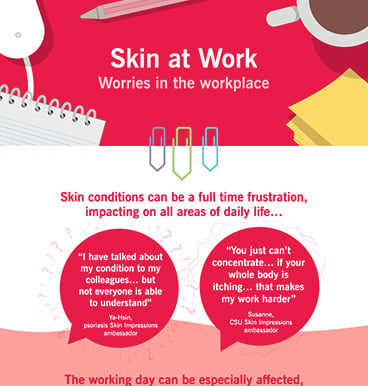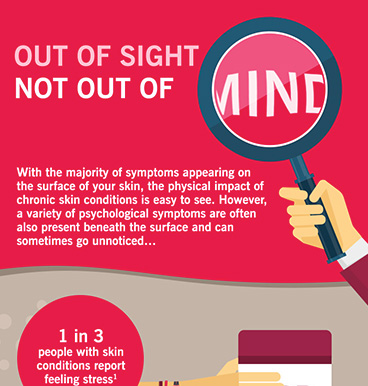“Do I have it?”
“When will I know?”
“What else could it possibly be?”
“How many more tests do I have to take?”
If you’ve been diagnosed with chronic spontaneous urticaria (CSU), you may have asked yourself some of these questions. And the most frustrating part of it all is that you likely didn’t get immediate answers.
Why? Because unlike most diseases, there is no single test that can definitively tell you whether or not you have chronic urticaria. You quite literally have to be diagnosed by default. But why?
The nature of chronic urticaria
The answer partly lies in the disease’s name. If you’ve been doing your research into CSU, you’ve probably noticed that it’s also referred to as CIU, which stands for chronic idiopathic urticaria. It’s the same disease, just two different ways of saying it. In fact, Idiopathic specifically means “spontaneous or unknown cause of disease.”1
But wait, why two names? Some dermatologists and allergists think the “CIU” term is outdated, inaccurate, and ambiguous.2 To these professionals, we should all stick to using the “CSU” diagnosis, as it’s more accurate.
All of this confusion surrounding chronic spontaneous urticaria is exactly what makes diagnosing it so challenging. Call it idiopathic, call it spontaneous. Either way, there is no known cause of the disease itself, let alone its flare-ups. And diagnosing a disease with no known cause is a challenge to say the least.
The diagnosis journey
Not surprisingly, there is no magic formula for identifying CSU. Recent studies have demonstrated that routine laboratory screening does not help to diagnose CSU, or it’s underlying triggers.3 The only way to identify if a patient has chronic urticaria is to rule out a whole host of other diseases. When visiting your doctor, consider discussing any history of hives and to ensure you’ve given a proper patient history. This can aid in the diagnosis.
The first place doctors look is usually allergies. The reason being is that CSU often presents in a similar way to allergies. The main cause of an allergy is activation of the mast cells, a type of cell that lives in your skin. When mast cells release their chemicals it results in the formation of itchy hives - just like with CSU.4
But when people with chronic urticaria don’t respond to treatment for allergies, it becomes clear that another problem could be the culprit. And the inability to identify the cause often leads both physicians and patients to worry that some other underlying illness could be at play. That means longer and more extensive testing (tests like physical exams, blood chemistry profiles, allergy tests, and screenings for other diseases & malignancies), further frustrating patients!5
And while all of this can be pretty disheartening, there is light at the end of the tunnel when it comes to diagnosing CSU. In fact, there are actually diagnosis guidelines that are meant to cut down on a lot of patient frustration, including 23 questions for your doctor to consider before ordering any additional tests!6
Even when urticaria gets identified as a possibility, it’s still not a straightforward solution. The distinction between acute and chronic urticaria can be challenging and largely artificial. The fact of the matter is that it’s hard to tell in which patients an outbreak of urticaria will simply happen once and then go away, or will lead to chronic disease.7
So why even bother?
This is a question a lot of patients find themselves asking as they go through what could be months of tests and false hope, searching for a diagnosis. But the fact of the matter is that only by properly diagnosing your disease can you adequately work to manage it.
It’s natural to think the process is unfair…because it largely is. As if spontaneous hives aren’t a bad enough hand to be dealt, they have to go ahead and make themselves even more frustrating by being incredibly difficult to diagnose! We feel your pain.
But remember the saying, “there’s power in knowledge.” And in this case, there is power in making it through the diagnosis drama and understanding what’s going on in your body. So if you’re in the midst of it right now, hang in there!
If you’re looking for more information about diagnosing CSU, including some questions to bring to your doctor, reference this great guideline by GA2LEN, a network of experts in dermatology and allergy. And if you’ve already gone through it, share your wisdom. Visit our Facebook page and lend your support to others who may be going through the same challenges you once experienced.









Join one of our communities
and connect with other people with severe skin conditions
Psoriasis facebook community